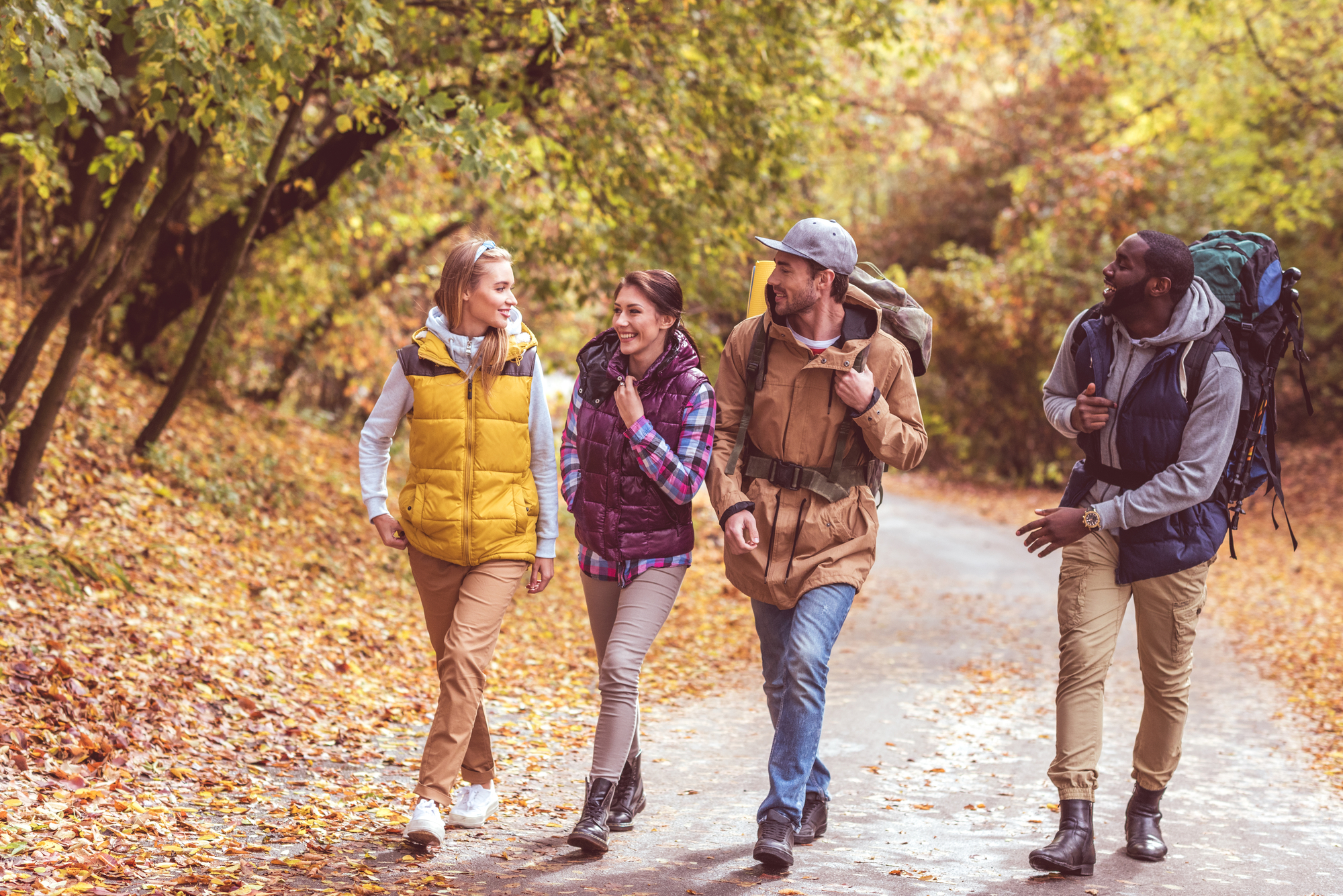
Great Smoky Mountains National Park may be the most popular national park in the country, but for those willing to venture into the extensive backcountry of this Southern Appalachian sanctuary, ample opportunities for solitude are one of many rewards.
In this article, we’ll break down some of the basics of backpacking in the Great Smokies, from rules, regulations, and safety tips to several of the truly standout routes for adventuring.
The Joys of Backpacking in the Smokies
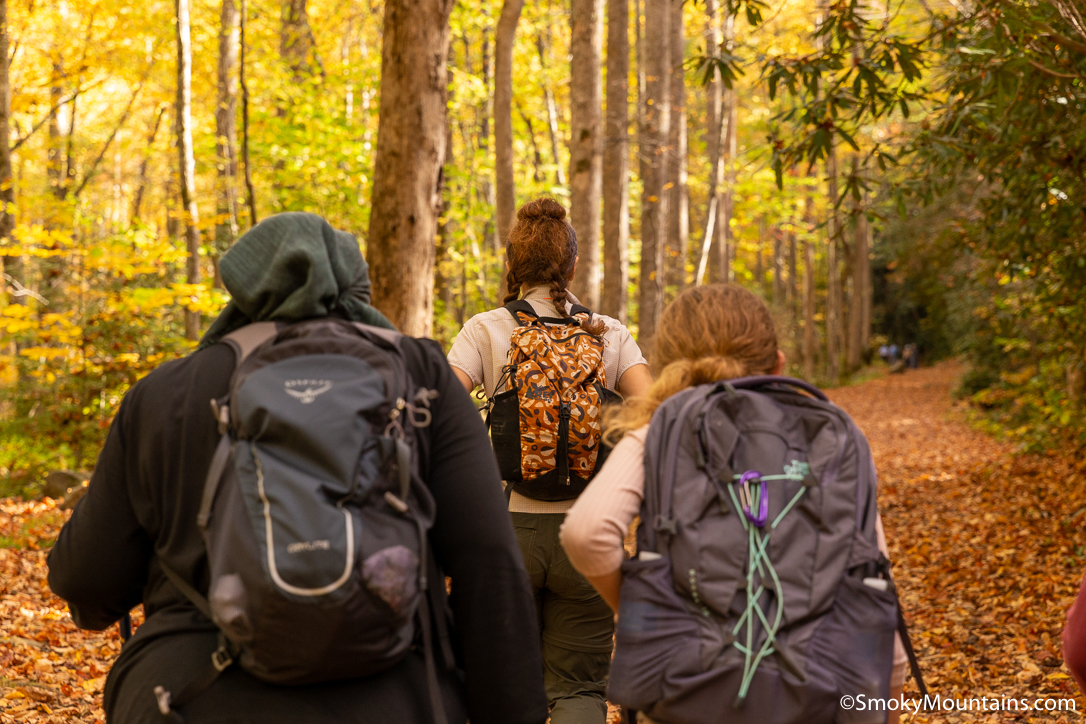
Much of Great Smoky Mountains National Park lies away from the roads. Indeed, the park contains some of the most extensive roadless acreages in the eastern U.S. To see that more remote realm, you’ve got to trek in by foot. Day hikers are limited by the distance they can reasonably cover in one shot, while backpackers have the luxury of tackling longer, more challenging routes and the thrill of bedding down in some of the wildest country in the East.
Making your way through lush old-growth cove forests or mysterious spruce-firs or breaking out of ridgetop timber to gasp at a far-reaching view over an ocean of peaks and canyons, then taking a lunch break beside a beautiful waterfall are some of the enchantments of the Great Smokies backcountry. You’d be amazed how often in this most-visited of U.S. national parks you’ll get to savor them alone.
Backpacking Rules & Regulations in Great Smoky Mountains National Park
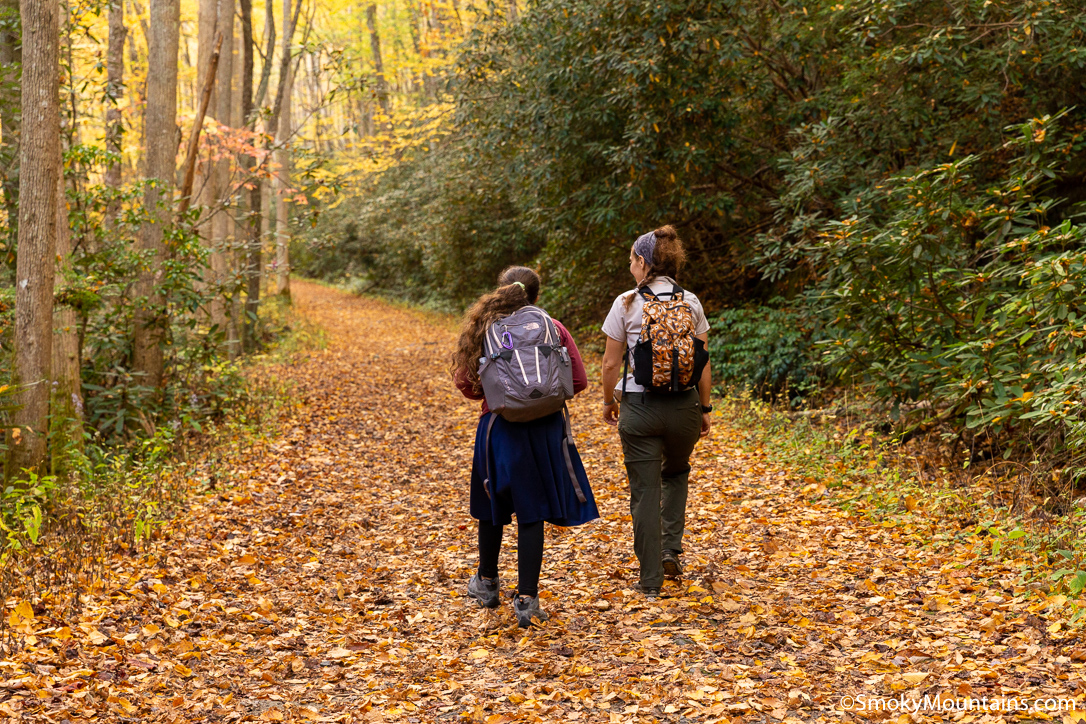
It’s critical to abide by the rules the Park Service has set for regulating backpacking in the Great Smokies. They’re there to protect the natural resources of this special place, enjoyed by millions every year and thus vulnerable to overuse; they also help ensure a positive experience for backcountry users. (Besides being considerate of the Smokies’ wilderness and your fellow park visitors, you’ve got another reason to follow the backcountry rules: Violations may result in a fine as steep as $5,000 and/or six months in jail.)
Backpackers in the park need a permit, of which two kinds are issued. Thru-hikers on the Appalachian Trail (the “A.T.”) following the Smoky Mountain crest through the park need an Appalachian Trail Thru-Hiker Backcountry Permit—but only if they’re beginning and ending their backpacking trip 50 or more miles outside the bounds of Great Smoky Mountains National Park.
All other backpackers—including those who might be hiking the A.T. just in the park, whether on a traverse or as part of another circuit—need to obtain a General Backcountry Permit. Such users also must make advance reservations for backcountry campsites or shelters, which are the only places where you can camp when backpacking; you can’t just pitch a tent anywhere, in other words.
More than 100 of those designated backcountry sites and shelters exist within the park. You can use tents or hammocks at backcountry campsites, but—if you’re holding a General Backcountry Permit—not at backcountry shelters. Those with A.T. Thru-Hiker Backcountry Permits can pitch a tent at a shelter if all its spaces are taken. Four spaces at the shelters lying along the A.T. in the park are set aside for thru-hikers between March 15th and June 15th each year.
Backpacking parties are generally capped at a maximum of eight in Great Smoky Mountains National Park. That said, a few backcountry sites can accommodate parties of up to 12 people under a special permit issued by the park.
You can obtain permits and make reservations (up to 30 days in advance—the earlier, the better) online at the Great Smoky Mountains National Park website, or in person at the park’s Backcountry Office at the Sugarlands Visitor Center. You can also call the Backcountry Office at 865-436-1297 for assistance with permits and reservations, and generally to find out more about backpacking in the Great Smokies; indeed, first-time backpackers in the park are encouraged to chat with the Backcountry Office to get the lowdown.
Let’s talk campfires! If you choose to have one—and keep in mind some proponents of Leave No Trace to eschew campfires for environmental reasons—keep in mind they’re only allowed at designated backcountry sites and shelters in established fire rings. You can only use dead and downed wood for fuel, mind you; don’t burn food waste, trash, or anything other than firewood.
Be sure to check out the Great Smoky Mountains National Park website for a complete rundown of backpacking regulations.
Distribution of Backcountry Campsites & Shelters in the Great Smokies
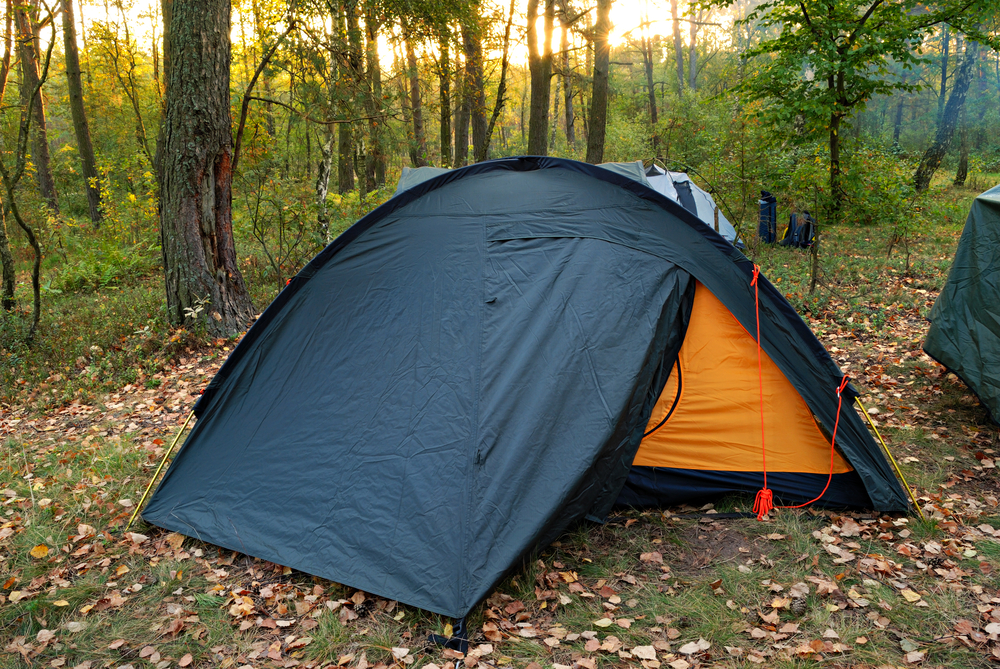
Campsites—either only open to backpackers or open to both backpackers and equestrians—are pretty well distributed across the rugged backcountry of Great Smoky Mountains National Park.
By contrast, backcountry shelters are primarily strung along the A.T., where indeed they provide the only overnight accommodations for A.T. backpackers except for one trailside campsite, No. 113, at Birch Creek Gap. A few other backcountry shelters, though, lie off the A.T.: the Kephart, Mount LeConte, and Laurel Gap shelters
Some Good Backpacking Trails & Routes in the Park
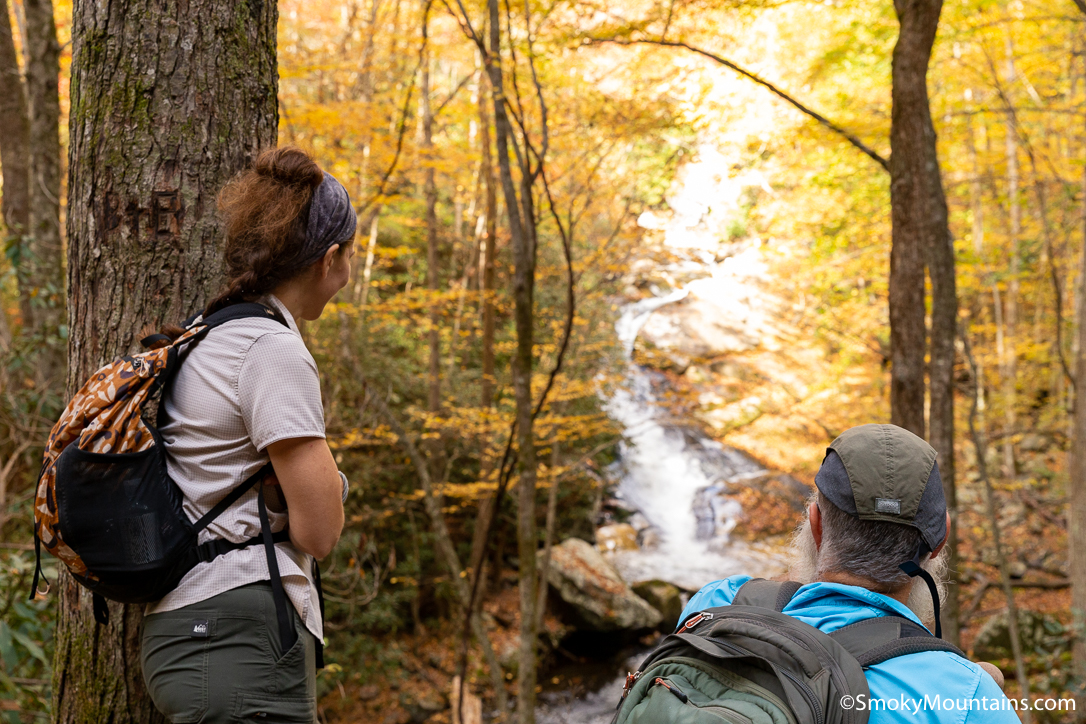
With more than 800 miles of trails in the park, you’re spoiled for choices when it comes to backpacking routes in the Smokies. Hiking all or part of the roughly 72-mile stretch of the A.T. in the park, between Fontana Dam and Davenport Gap, is a classic adventure; this internationally known footpath accesses a number of popular park landmarks, including the Smoky Mountain high point of Clingmans Dome and the spectacular (if unattractively named) vantage of Charlies Bunion.
Two other long-distance trails wind their way into the park: the Benton MacKaye Trail and the Mountains-to-the-Sea Trail, both of which offer further backpacking opportunities.
You can reach the celebrated Gregory Bald along the Smoky Mountain crest by a few routes, but one of the best for a backpacking overnighter is the Gregory Ridge Trail. The bald, which delivers some of the most incredible panoramas in the park, is especially gorgeous during the riotous June bloom of its azalea shrubs. You might also consider a trek up the Lead Cove and Bote Mountain trails—following the trace of the old Anderson Road, once used to bring livestock up for high-country grazing—to reach another mountain bald along the A.T.: Spence Field, which offers a fine view of the great Thunderhead Mountain.
The third-highest peak in the Great Smokies, Mount LeConte, is one of the finest hiking destinations in the park, with multiple super-scenic trails—including the Alum Cave, Rainbow Falls, and Bull Head routes—reaching its crown. Reserve a spot in the Mount LeConte Backcountry Shelter, and you can enjoy the knockout sunrises and sunsets this impressive summit’s known for.
Solitude and deep communion with the Smoky Mountain wilderness await on such quieter backpacking routes as the Twentymile Loop in the park’s southwest and the Grapeyard Ridge Trail between the Roaring Fork Motor Nature Trail and Greenbrier Cove.
Backpacking Safety & Considerations
Pay careful attention to the weather forecast as your backpacking trip approaches, and carry a NOAA weather radio with you to stay on top of conditions. Thunderstorms are the main concern—take the threat of lightning seriously—but so are high winds, which can topple trees, as well as snowfall, cold temperatures, and other mainly shoulder-season and wintertime weather hazards.
That weather radio should be part of the wilderness essentials you keep in your pack while adventuring in the Smokies backcountry. Others include a topographic map(s) for the area(s) you’re exploring (you should have a paper map on hand even if you’re also using a digital map or GPS), a compass (again, even if you have a GPS unit), fire-starting materials, extra warm clothing layers, extra food, and signaling tools such as an emergency whistle.
You also need a water filter or purifier: You should treat all water sources in the backcountry to avoid waterborne illnesses. (Boiling water also kills any dangerous microbes, but it’s an inefficient—and fuel-costly—system to rely on for securing safe drinking water.)
On the water subject, be careful at stream crossings in the Great Smokies; during periods of high flow, as after heavy rainfall, for example, these can be tricky.
Use the park’s trail map, your topo(s), GPS unit, and trail markers to stay on track out there. Most of the park trails are well-signed but keep a sharp eye out to distinguish between the official route and the various user paths (or “manways”) and animal trails that may intersect or branch off the main trail.
Experience the Great Smokies at Their Wildest on a Backpacking Trip
The Great Smoky Mountains are wonderful enough taken in from the pavement, but backpackers get to truly immerse themselves in this gorgeous, bio-diverse, and deliciously wild range. Fall under the spell of the Smoky Mountain backcountry!